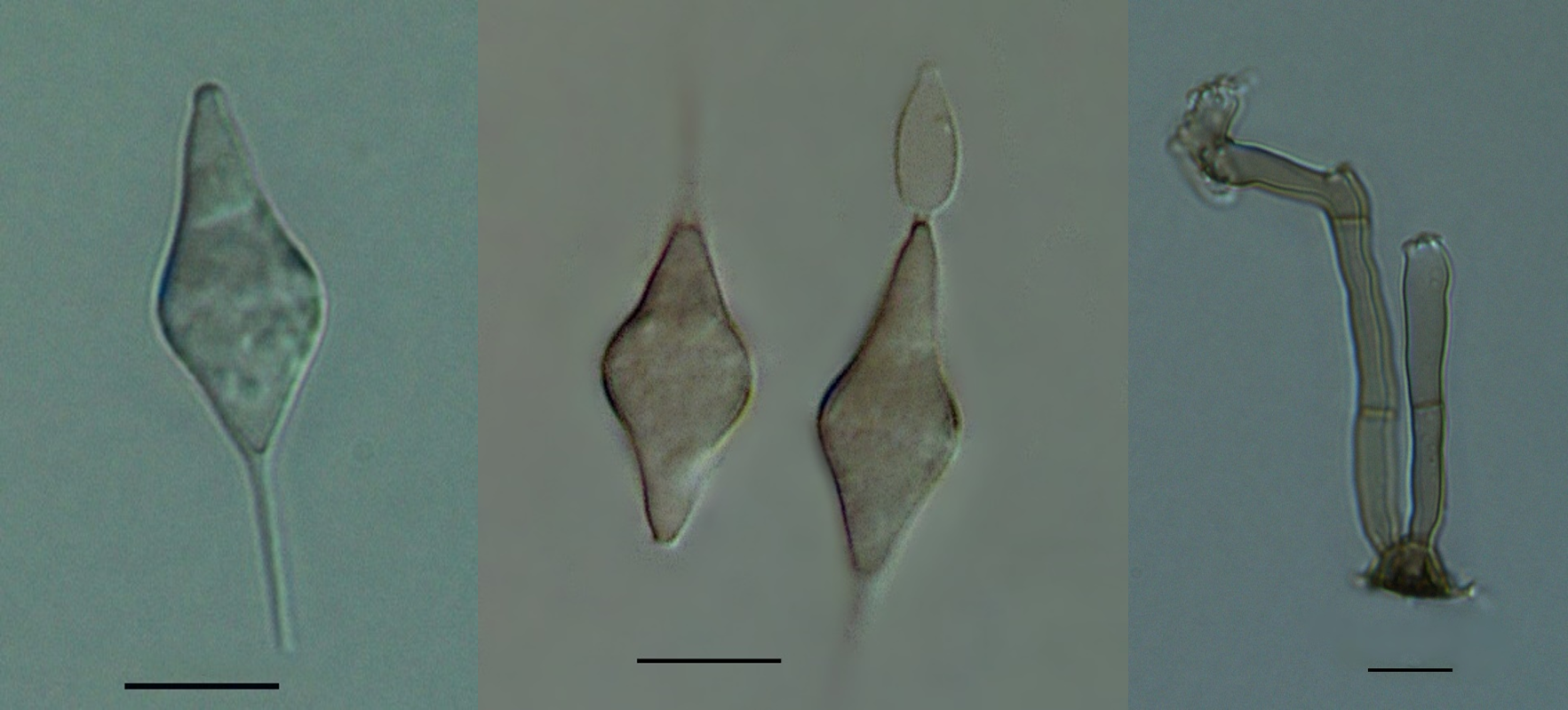- Proposed
- 2Under Assessment
- 3Preliminary Assessed
- 4Assessed
- 5Published
Beltrania rhombica Penz.
- Scientific name
- Beltrania rhombica
- Author
- Penz.
- Common names
- IUCN Specialist Group
 Cup-fungi, Truffles and Allies
Cup-fungi, Truffles and Allies- Kingdom
- Fungi
- Phylum
- Ascomycota
- Class
- Incertae sedis
- Order
- Incertae sedis
- Family
- Incertae sedis
- Assessment status
- Proposed
- Proposed by
- Marcela Barbosa
- Comments etc.
- Marcela Barbosa, Elaine Malosso
Assessment Notes
Taxonomic notes
The genus Beltrania Penz. was erected to accomodate a specimen collected in Italy and the etymology is a tribute to Viti Beltrani. This genus was described as setae with radially lobed basal cells, conidiophores with separating cells, and biconic conidia with a hyaline transverse band and an apical tubular appendage (Zheng et al., 2019).
Why suggested for a Global Red List Assessment?
This is a species found in association with decaying leaf material in forest floor, especially humid forests, where there is a large production of organic matter. However, in impacted environments where there is a reduction of vegetation, this species may decline erely.
Geographic range
Distribution: in subtropical climate or cosmopolitan
Population and Trends
Beltrania rhombica seems to be mostly distributed in the tropical forests of the South Hemisphere, although it has been registered in all continents, except Antarctica. B. rhombica is the type of the genus and considered very common in litter (Ellis 1971, Gusmão; Grandi 1996).
Population Trend: Stable
Habitat and Ecology
This species is commonly collected associated with leaf litter.
Threats
Conservation Actions
None
Research needed
There is no record of this species for deserts in the world and in the Antarctica. In Brazil, there are no records for some ecosystems associated with the Atlantic Forest Domain such as Coastal Trays, Dunes and Mangroves.
Use and Trade
Beltrania rhombica produces volatile compounds with the potential for biological control of plant diseases.
Two bioactive compounds of the eudesmane sesquiterpenes (rhombidiol and rhombitriol) were isolated from Beltrania rhombica (Rukachaisirikul et al., 2005).
Bibliography
Country occurrence
Regional Population and Trends
| Country | Trend | Redlisted |
|---|
